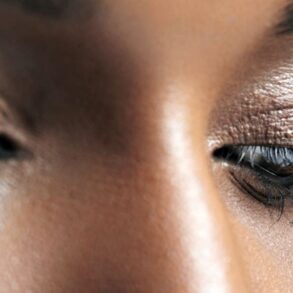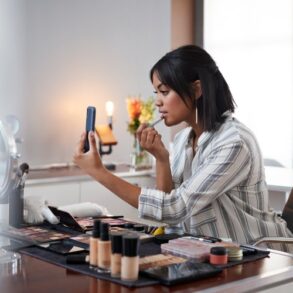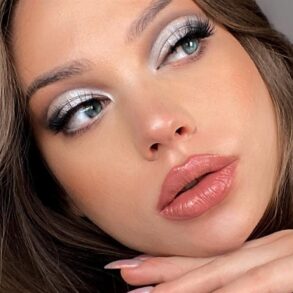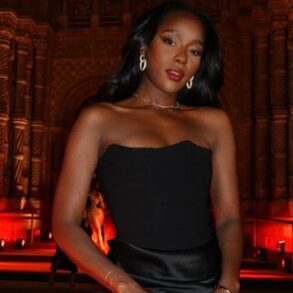Pune, India, Nov. 07, 2023 (GLOBE NEWSWIRE) — According to our latest study on “Cosmetics Market Size Report, Forecast to 2030 – COVID-19 Impact and Global Analysis – by Product Type, Category, Distribution Channel, and Geography,” the cosmetics market is expected to grow from $262.21 billion in 2022 to $367.69 billion by 2030; it is estimated to grow at a CAGR of 4.6% from 2022 to 2030.
Download PDF Brochure: https://www.theinsightpartners.com/sample/TIPRE00030308/
Cosmetic product manufacturers and end users across the globe are investing significantly in strategic initiatives such as product innovation, expansion, and mergers & acquisitions of their businesses to attract large number of consumers and enhance their market position. To maintain their strategic position in the market, key players are investing significantly in the quality enhancement of various cosmetics. People face various skin-related problems such as rashes, acne, and sensitivity in many regions owing to environmental conditions like UV rays, deserts, and pollution. Thus, manufacturers are launching products with hydrating properties. For instance, in June 2022, Biologi, an Australian clean cosmeceutical business, unveiled an anti-pollution serum with a wild-harvested extract containing vitamin C, niacinamide, and salicylic acid.
Moreover, the demand for anti-aging creams for younger skin is increasing. The market players are adopting innovative strategies such as product innovations, mergers, and acquisitions to strengthen their position in the anti-aging segment. In September 2022, L’Oréal signed an agreement to acquire SkinBetter Science, a physician-dispensed American skincare brand. Skinbetter Science is known for formulating innovative products with active ingredients for anti-aging, moisturizing, cleansing, exfoliating, skin peeling, and sun protection. Such product innovation by key players helps to create a strong foothold in the cosmetics market.
The increasing prevalence of skin diseases caused by synthetic ingredients in beauty products and cosmetics fuels the demand for organic skin care products. Thus, manufacturers are launching different organic skin care products. For instance, Lady Green – an organic beauty brand based in France, launched a range of organic makeup and face care products, including face wash, face cream, mascara, and BB cream, for blemished, acne-prone skin in February 2021. Such product innovation increases the demand for organic and natural skin care products, which is expected to boost the cosmetics market share in the forecast period.
Moreover, Key market players are expanding their presence in various countries to cater to the increasing demand by collaborating with other companies or acquiring other businesses. In January 2022, Procter & Gamble acquired the US-based luxury skincare brand Tula. Tula is a clean skincare brand powered by superfoods and probiotic extracts. Tula’s products are designed in order to help improve skin balance, calm skin irritation, soothe skin, and nourish skin to improve hydration. As part of the acquisition agreement, P&G Beauty will support the Tula team to propel the brand growth and support innovation and expansion. Such business expansion strategies by major manufacturers are expected to drive the cosmetics market growth in the forecast period.
L’Oréal Paris, Procter & Gamble, Unilever, SHISEIDO PROFESSIONAL INC, LVMH, AMOREPACIFIC US, INC, Beiersdorf, Estée Lauder Inc, Kao Corporation, Revlon are among the key players operating in the cosmetics market. These key players adopt product innovation strategies and invest in business expansions to meet consumers’ demands, further driving the cosmetics market across the globe.
Impact of COVID-19 Pandemic on Cosmetics Market
The bans imposed by various governments in Europe, North America, and Asia Pacific on international travel forced the companies to temporarily put their collaboration and partnership plans on hold. During the starting phase of the COVID-19 pandemic, implementing lockdown restrictions and shutdown of manufacturing units led to a production shortfall, creating a demand and supply gap. The personal care product manufacturers faced significant challenges due to supply chain constraints caused by trade bans, nationwide lockdowns, and travel restrictions. The disruptions in the supply chain created a shortage of raw materials, which negatively impacted the distribution and production of various products, leading to increased prices. These factors hampered the profitability of the cosmetics and personal care industry in 2020 and early 2021, thereby hampering the cosmetics market growth.
However, consumers preferred e-commerce platforms during the pandemic to shop for cosmetic products. Thus, the rise in adoption of online retail boosts the demand for cosmetics. According to data released by Bluecore, an average increase of 127% online sale of skincare products and beauty products was observed globally in June 2020, when compared with same month in 2019. This helped to fulfill the increasing demand of the consumers. These factors positively impacted the cosmetics market growth during the COVID-19 pandemic.
However, in 2021, various economies resumed their operations as governments announced relaxation in the previously imposed restrictions, which fueled the global marketplace. Moreover, manufacturers were permitted to open at full capacity, which helped to overcome the demand and supply gap and other repercussions. As people of many countries were fully vaccinated by 2021, the manufacturers focused on increasing their production to revive their businesses.
Order a Copy of this Report at: https://www.theinsightpartners.com/buy/TIPRE00030308/
Cosmetics Market Breakdown – by Region
Based on geography, the cosmetics market is primarily segmented into North America, Europe, Asia Pacific (APAC), the Middle East & Africa (MEA), and South & Central America (SAM). The market growth in Asia Pacific is significantly growing as the consumers from emerging countries in the region are becoming more aware of skincare due to exposure to social media, especially a growing population aged 13–45 years in countries, such as China, India, and Bangladesh. This is expected to fuel the cosmetics market over the next few years. Moreover, natural ingredients, multiple-step skincare routines, and obsession with glass skin are a few trends in the K-beauty (Korean beauty) industry. Consumers across the region are adopting these trends, increasing the demand for various cosmetics products.
Moreover, the increasing working-class women population in the region increases the spending on beauty and personal care products, boosting the demand for skincare, hair care, and makeup products and positively impacting the cosmetics market growth. Men and women increasingly use cosmetics in their daily routines, which contributes to expanding the cosmetics industry’s demand. These factors are expected to boost the demand for cosmetic products and drives the cosmetics market growth in the region.
The report segments the cosmetics market as follows:
The cosmetics market is segmented on the basis of type, category, distribution channel, geography. The market is segmented based on type into hair care products, skin care products, fragrances & deodorants, makeup & color cosmetics, and others. Based on category, the cosmetic market is bifurcated into men and women. Based on distribution channel, the cosmetic market is segmented into supermarkets and hypermarkets, online retail, specialty stores and others. By geography, the market is primarily segmented into North America, Europe, Asia Pacific (APAC), the Middle East & Africa (MEA), and South & Central America (SAM). The market North America is further divided into the US, Canada, and Mexico. The European market is subsegmented into Germany, France, the UK, Italy, Russia, and the Rest of Europe. The cosmetics market in Asia Pacific is further segmented into China, India, Japan, Australia, South Korea, and the Rest of Asia Pacific. The market in the MEA is further segmented into South Africa, Saudi Arabia, the UAE, and the Rest of MEA. The cosmetics market in South & Central America market is categorized into Brazil, Argentina, and the Rest of South & Central America.
Go through further research published by The Insight Partners: (Purchase with 10% Instant Discount):
CBD Cosmetics Market Size and Forecasts (2020 – 2030)
Halal Cosmetics Market 2022 to 2028 | Demand, Size & Forecast
Anti-Aging Cosmetics Market Size and Forecasts (2020 – 2030)
About Us:
The Insight Partners is a one stop industry research provider of actionable intelligence. We help our clients in getting solutions to their research requirements through our syndicated and consulting research services. We specialize in industries such as Semiconductor and Electronics, Aerospace and Defense, Automotive and Transportation, Biotechnology, Healthcare IT, Manufacturing and Construction, Medical Device, Technology, Media and Telecommunications, Chemicals and Materials.
Contact Us:
If you have any queries about this report or if you would like further information, please contact us:
Contact Person: Ankit Mathur
E-mail: sales@theinsightpartners.com
Phone: +1-646-491-9876

This post was originally published on this site be sure to check out more of their content.





